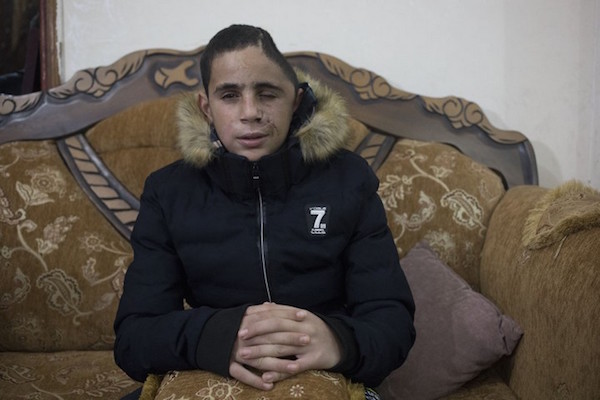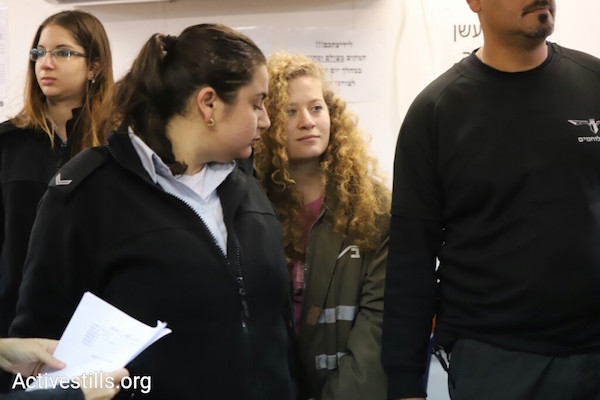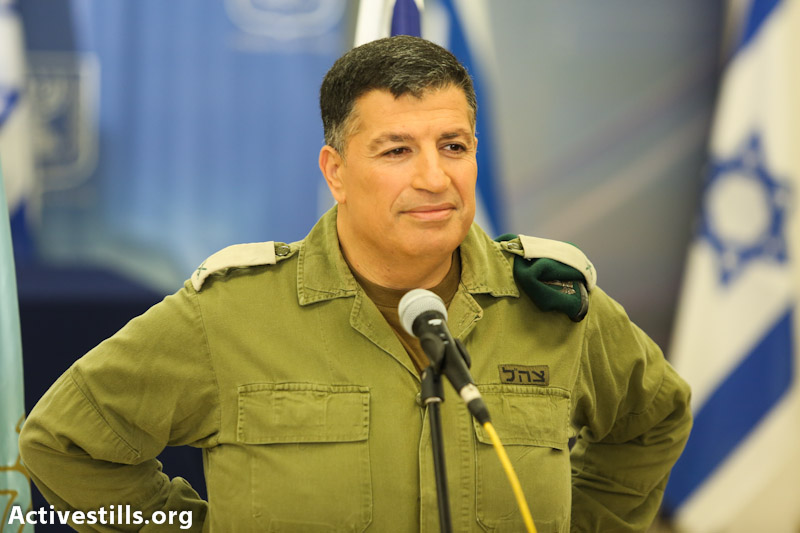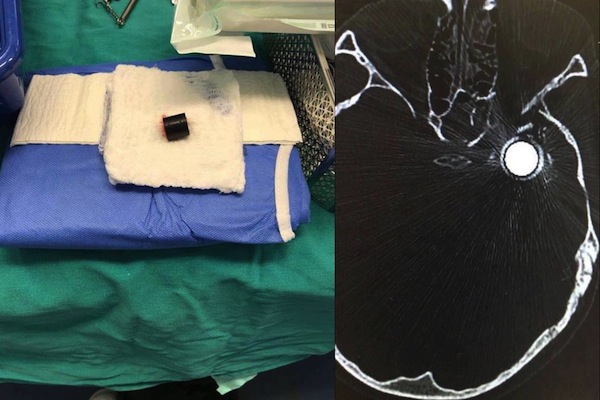Facts show that Mohammed Tamimi was shot in the head by Israeli soldiers. But the facts were not enough for the Israeli army, or the journalists who toe the government line.

Let’s start with the facts. On December 15, 2017, 15-year-old Mohammed Tamimi sustained a severe head wound during a demonstration in the West Bank village of Nabi Saleh.
Like most Fridays in Nabi Saleh, demonstrators headed toward the village’s spring, which Israeli settlers took over a number of years ago. The Israeli soldiers who came to suppress the protest that day did not make do with just protecting the spring or the nearby settlement of Halamish — instead they invaded the village and commandeered a home, from which they opened fire at young demonstrators who threw stones at them.
Mohammed Tamimi was inside his village at the time. An Israeli army rubber-coated metal bullet struck him in his head, and was hospitalized in serious condition. We know this because the hospital produced a detailed report of the medical procedure, a CT scan of his head showing the bullet lodged inside, a photo of the bullet after it was removed in surgery, and the first-hand testimonies of those who witnessed the incident, including Israeli activists Jonathan Pollak and Oded Yediya.
Pollak and Yediya spent the rest of that afternoon making phone calls attempting to secure the transfer of Mohammed, whose life was in danger, to an Israeli hospital. They failed. The surgery took place at a Palestinian hospital in Ramallah finished only at 4:30 a.m. Mohammed required several more rounds of surgery to fix the damage to his skull. Haaretz’s Amira Hass published a detailed report of the incident at the time.
We also know that an hour or so after the shooting, Mohammed’s cousin Ahed tried to expel soldiers from the courtyard of her family home — and the rest is history. We know that just hours after the video of her slapping the soldiers went viral, 17-year-old Ahed was pulled out of her bed and arrested by Israeli soldiers. She is still in prison.

In an overnight raid in Nabi Saleh on Monday Israeli soldiers arrested Mohammed and eight other Palestinian youths. He was interrogated by Israeli police — without a parent or lawyer present — and was released after a few hours.
Those are the facts. Here’s the spin.
According to Maj.-Gen. Yoav “Poli” Mordechai, the head of Israel’s military government charged with ruling over Palestinians in the West Bank, during his interrogation Mohammed Tamimi confessed that his head injury was the result of a bicycle accident — that his head hit the handlebars.
Family members and human rights organizations explain the “confession” as such: a wounded child, whose family members are in Israeli prisons, and who is suspected of throwing rocks, will say anything just to go home if he is being interrogated in the middle of the night without a parent or lawyer present.
Law enforcement officers and army major generals are not supposed to simply accept something a distressed child tells them under duress in interrogation. They should know that the army itself never denied Mohammed Tamimi was shot, and that the aforementioned evidence proves it.
Mordechai, whose job it is to oversee and rule over the day-to-day lives of millions of Palestinian civilians, instead smeared the entire Tamimi family, as well as the witnesses and the hospital staff.
Everyone is lying, he says, the boy fell from his bike.
Why? Because it serves the army’s and government’s agenda — to fight every village, family, and child who resists Israeli military rule in the occupied territories.

A battle of narratives
In the face of such lies, one might expect that the Israeli media would paint a more serious picture that, inevitably, exposes Mordechai’s lies.
But that’s not the world we live in, at least not if you’re a consumer of Hebrew-language news.
Ynet published a short news item that included only Mordechai’s claims, without presenting any facts to counter his narrative.
Ma’ariv‘s headline and sub-headline were dedicated solely to Mordechai. Only those who read to the end of the article will find a response by the Tamimi family or by their attorney Gaby Lasky or MK Dov Khenin (Joint List). The facts are nowhere to be found.
Israel Hayom confused its readers with their headline: “Rubber bullet? What really wounded Mohammed Tamimi.” At least the paper deigned to include a photo of the bullet that was removed from the teen’s head.

Channel 10 struck a near-identical tone with the headline, “A battle of versions.” There is no truth, of course. There’s no need to find out what actually happened. Dear viewers at home, you get to decide who is telling the truth: the IDF or the Palestinians.
And lastly, Haaretz. As expected, the paper did its due diligence — yet still fell into a similar trap. The initial Hebrew headline read: “IDF: Ahed Tamimi’s cousin admits he was not shot in the head but injured on his bicycle.” Anyone who read the headline would likely assume the army had exposed a lie. At first, the article only dealt with Mordechai’s post, as well as the responses to it. Within an hour or two the headline was changed to mention the CT scan, and the tone of the text focused on exposing Mordechai’s lie.
Aside from Haaretz, the coverage of the Mohammed Tamimi story reveals the sordid status of Israeli journalism. Statements by the army and the police are taken as truth, especially in the face of claims made by Palestinians. At best, we hear about a battle of conflicting narratives.
That is not journalism – it’s government propaganda.
This article was also published in Hebrew on Local Call. Read it here.

